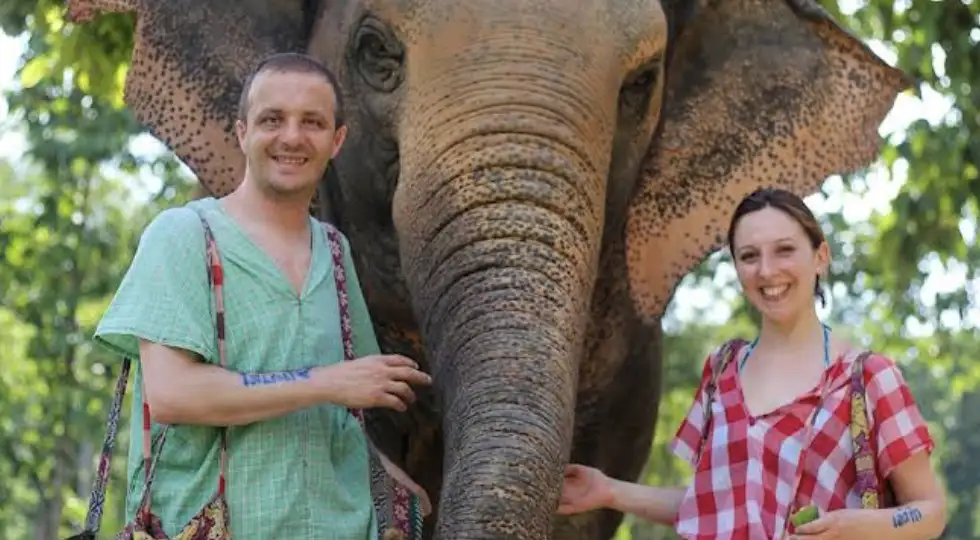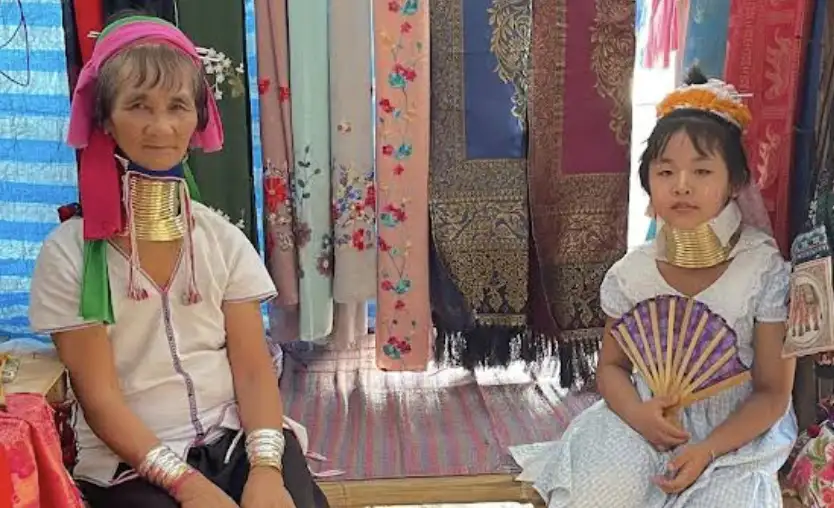Table of Contents
Mae Wang, a serene district in Chiang Mai Province, is a hidden gem that offers a perfect blend of natural beauty, cultural immersion, and adventure. Just an hour’s drive from Chiang Mai’s bustling city center, Mae Wang feels like a world apart with its lush jungles, winding rivers, and vibrant hill tribe communities. My recent trip to this area was filled with unforgettable moments, from trekking to waterfalls to connecting with local Karen villages. Here’s my personal review of the best places to visit in Mae Wang, written in a warm, traveler’s voice to inspire your own adventure.
Mae Wang National Park: Nature’s Playground
Mae Wang National Park is the heart of the district’s natural allure, spanning 120 km² of forested mountains and river valleys. My visit here was a refreshing escape from city life. The park’s highlight is Pha Chor Cliffs, often called the “Grand Canyon of Thailand.” These 30-meter-tall cliffs, sculpted by centuries of erosion from the Ping River, are a striking sight. The short 400-meter walk from the parking lot to the cliffs was easy, and I spent time marveling at the rugged formations while snapping photos.

The park also offers trekking trails through mixed deciduous and evergreen forests. I joined a guided hike with a local named Ron, who pointed out unique plants like the “Sensitive Plant” that wilts when touched. We stopped at Mae Wang Waterfall, a 20-meter cascade perfect for a quick dip. The trail was shaded, but the humidity had me sweating, so the cool water was a godsend. The park’s campsites are basic but affordable (tents from 150 THB), and I’d love to return for an overnight stay to wake up to jungle sounds. Tip: Visit from December to February for cooler weather and blooming sakura.
Mae Wang River: Bamboo Rafting Bliss
Bamboo rafting on the Mae Wang River was hands-down one of my favorite experiences. The rafts, made from sturdy bamboo poles, glide gently along the crystal-clear water, offering a relaxing way to soak in the scenery. My group’s rafting trip lasted about 45 minutes, and the slow pace let us admire the forested banks and spot birds flitting overhead. Our guide shared stories about the river’s role in local life, which added a personal touch.

The water wasn’t too fast, making it ideal for families or first-timers. I was lucky enough to glimpse an elephant bathing nearby at a sanctuary, which felt like a bonus. If you’re craving adventure, some sections offer mild rapids, but overall, it’s more about tranquility than thrills. Book through a local operator (around 500 THB per person) and pair it with a trek for a full day of fun. Bring a waterproof bag for your phone to capture the lush greenery.
Ethical Elephant Sanctuaries: A Heartfelt Encounter
Mae Wang is home to several elephant camps, but I chose Chai Lai Orchid, known for its ethical approach. Unlike some places that exploit elephants, this sanctuary focuses on observation and care. I spent a morning feeding bananas to a gentle giant named Mae Tong and watched her play in the river. The staff explained the elephants’ rescue stories, which was both humbling and eye-opening.

The sanctuary also offers a “Coffee with Elephants” stop, where I sipped local coffee while watching the animals roam. It’s not perfect—some question the ethics of any human-elephant interaction—but Chai Lai felt more responsible than others I’d researched. Avoid camps offering rides or shows, as they often prioritize profit over animal welfare. A half-day visit costs about 1,500 THB, and the funds support elephant care and community projects.
Wat Luang Khun Win: A Hidden Jungle Temple
Tucked deep in the jungle, Wat Luang Khun Win is a spiritual retreat that feels like a secret discovery. The temple’s teak architecture, including a massive Buddha carved from a single tree, is stunning against the forested backdrop. Getting there was an adventure—my motorbike ride along the R1013 and graded dirt roads was bumpy but thrilling. The route can get muddy in the rainy season, so check conditions if you’re not confident off-road.

The temple was quiet when I arrived, with just a few monks tending the grounds. I spent an hour wandering, soaking in the peace and snapping photos of the intricate carvings. The surrounding jungle added a mystical vibe, and I felt a deep sense of calm. Entry is free, but donations are appreciated. Pair this visit with a stop at the nearby giant Buddha at Phra That Si Somdej Phra Phutthachinwong for a panoramic view of the Mae Wang Valley.
Karen Hill Tribe Villages: Cultural Immersion
Visiting a Karen village was a highlight for its authentic glimpse into hill tribe life. I joined a guided tour to a small village near Mae Mut, where I met families weaving traditional textiles and crafting bamboo baskets. The locals were warm, and my guide translated as we chatted about their customs. I bought a handwoven scarf for 200 THB, knowing it supported the community.

The village’s long-neck Karen women, known for their brass neck rings, shared stories about their traditions, though I was mindful to respect their privacy and avoid treating them like a tourist attraction. The experience felt genuine, unlike some overly commercialized hill tribe tours. Book through a responsible operator (around 1,000 THB for a half-day) and ask questions to learn about their sustainable farming and cultural practices.
Waterfall Hikes: Chasing Cascades
Mae Wang’s waterfalls are perfect for hikers and nature lovers. Beyond Mae Wang Waterfall, I explored Huay Yuak Waterfall, a family-friendly spot with shallow pools for splashing. The trail was mostly flat, with a few steep steps at the start, and the lush jungle setting made it feel like a tropical paradise. I packed a picnic and spent an hour relaxing by the water.

For a more challenging hike, Da La Poe Waterfall is a stunner, reachable via a two-day trek with a Karen homestay. The trail winds through cloud forests, and the waterfall’s deep pool was perfect for a swim. Be cautious near waterfalls, as rocks can be slippery, especially in the rainy season. Guided hikes cost around 2,000 THB, including meals and a guide.
Practical Tips for Visiting Mae Wang
Getting There: Mae Wang is 45 km southwest of Chiang Mai. Rent a motorbike (300 THB/day) or hire a private driver (1,500-2,000 THB/day) for flexibility. Public transport is limited, so tours are a good option.
Best Time to Visit: December to February offers cool, dry weather and blooming cherry blossoms. Avoid the rainy season (June to November) for safer trails and roads.
What to Bring: Lightweight hiking shoes, sunscreen, insect repellent, a reusable water bottle, and cash for small vendors. A rain jacket is handy year-round.
Where to Eat: Roadside restaurants near the river serve northern Thai dishes like khao soi for 50-80 THB. I loved the Massaman curry at a homestay—simple but packed with flavor.
Where to Stay: Chai Lai Orchid offers eco-friendly bungalows (1,500 THB/night), or try a Karen homestay for a cultural experience (500-800 THB/night).
Respect the Environment: Stick to trails, avoid littering, and choose ethical operators to support conservation and local communities.
Final Thoughts
Mae Wang is a destination that rewards those willing to venture off the beaten path. From the dramatic cliffs of Pha Chor to the gentle sway of a bamboo raft, every moment felt like a connection to Thailand’s natural and cultural soul. The warmth of the Karen people and the serenity of the jungle left me refreshed and inspired. Compared to my visits to Chiang Mai’s temples or Bangkok’s markets, Mae Wang offered a quieter, more intimate experience that I’ll cherish.
If you’re planning a trip to Chiang Mai, carve out a day or two for Mae Wang. Whether you’re chasing waterfalls, seeking cultural insights, or simply craving nature, this district delivers. I’m already dreaming of my next ride along the Mae Wang Loop, maybe with a sunrise stop at a waterfall. Pack your sense of adventure and let Mae Wang work its magic on you.
